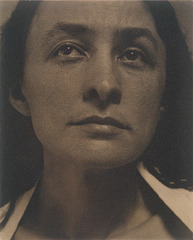Watercolor Painting Terms & Techniques
Unlock all answers in this set
Unlock answersquestion
Watercolors Dry Lighter
answer
With watercolor paint, a color will always look more intense (stronger and darker) when it is wet. A color will always be lighter and paler when dry. It's something you get a feel for through practice and experience. If your paintings look insipid, make the colors more intense by using more paint and less water, or painting another layer of a color over the first.
question
Test Color First
answer
Watercolor paint dries very fast, so test a color on a scrap of paper or on the edge of your painting before using it. That way you'll know whether it's the hue and/or tone you're after.
question
Dry Watercolor Remains Soluble
answer
Even once watercolor paint has dried, it remains water soluble. You can re-wet the dried paint with water on a brush and it will 'turn' back into paint. This means you can lift the paint off the paper to fix a mistake, lighten a color by removing some of it, or even mix it with new paint. Though you do need to be careful you don't scrub at the paper too much and damage the surface.
question
Watercolor Paint is Transparent
answer
Watercolor paint is transparent. You can see through the layers of color you've painted, making it near impossible to hide mistakes. Don't fight against this, but embrace it and work with it.
question
Light to Dark
answer
Because the white in watercolor comes from the white of the paper, not the paint itself, the usual advice is to paint from light to dark. To start with the lightest colors and tones, and build your way up to the darkest. But don't be afraid to experiment with putting down dark colors early on in a watercolor painting, as it may turn out to be an approach that works for you!
question
Use a Decent Watercolor Brush
answer
Rather have just one, good brush than a handful of cheap ones that splay out and drop hairs. It'll save you a lot of frustration. A good brush retains its shape so you can get a very fine brushmark from the point; it holds a good quantity of paint so you need to reload it less often.
question
Don't Add Too Much Water
answer
Avoid inadvertently adding more water to your paint after you've washed your brush by dabbing the brush onto a dry cloth before putting it in the paint again. If you've loaded a brush with paint and decide you needed less paint, hold clean cloth at ferrule end of the brush hairs to soak up some of the excess. Doing it at this end helps keep the pigment at the tip of the brush.
question
Watercolor Paper Isn't Identical
answer
The label \"watercolor paper\" covers a lot of variations. Not only in the thickness of the paper, but also how smooth the surface is and how 'white' it is.
question
Stretch Thin Watercolor Paper
answer
The more paint you use and the thinner the sheet of paper, the greater the likelihood is that the sheet will buckle. This can be prevented by stretching the paper first.
question
Masking Fluid Mistakes
answer
Masking fluid or frisket is very useful for blocking off areas where you don't want the paint to be. But do check first that it'll come off the paper, as it'll soak into very soft paper and then not come off without destroying the surface of the paper.
question
Wet-on-Wet
answer
The technique of painting wet color into a wet surface (paper). Color applied this way usually dries without a hard edge, diffusing and spreading the wash and creating atmospheric effects.
question
Wash
answer
In painting, a thin, translucent layer of pigment, usually watercolor. Often used as the first layer of a sky.
question
Dry Brush
answer
Any textured application of paint where your brush is fairly dry (thin or thick paint) and you rely the hairs of your brush, the angle of your stroke, and the paper's surface texture to create broken areas of paint.
question
Graded Wash
answer
A wash that smoothly changes in value from dark to light.
question
Georgia O'Keeffe

answer
A pioneer of modernism in America, she first produced largely abstract work, adopting a more figurative style in the 1920s. Her best-known paintings depict enlarged studies, particularly of flowers, and are often regarded as being sexually symbolic.



